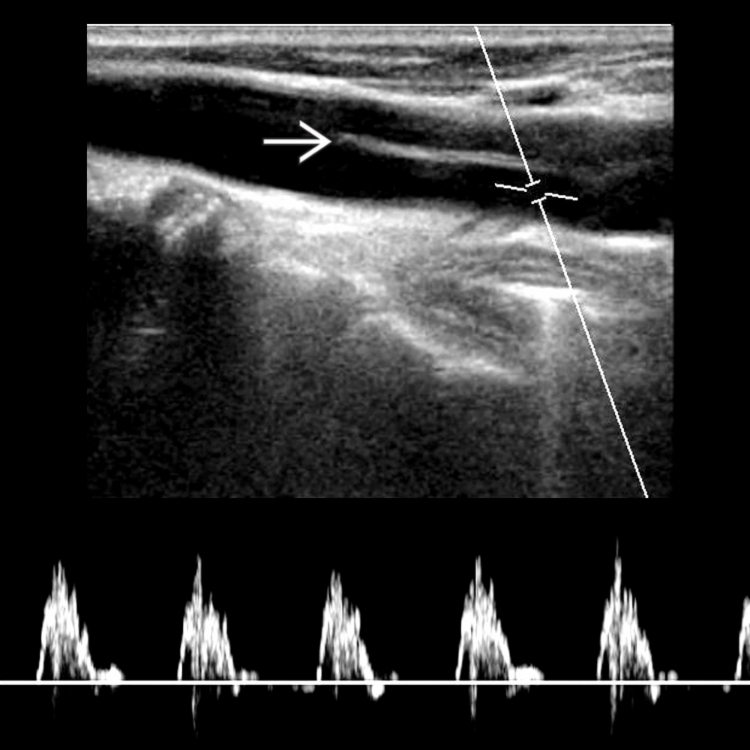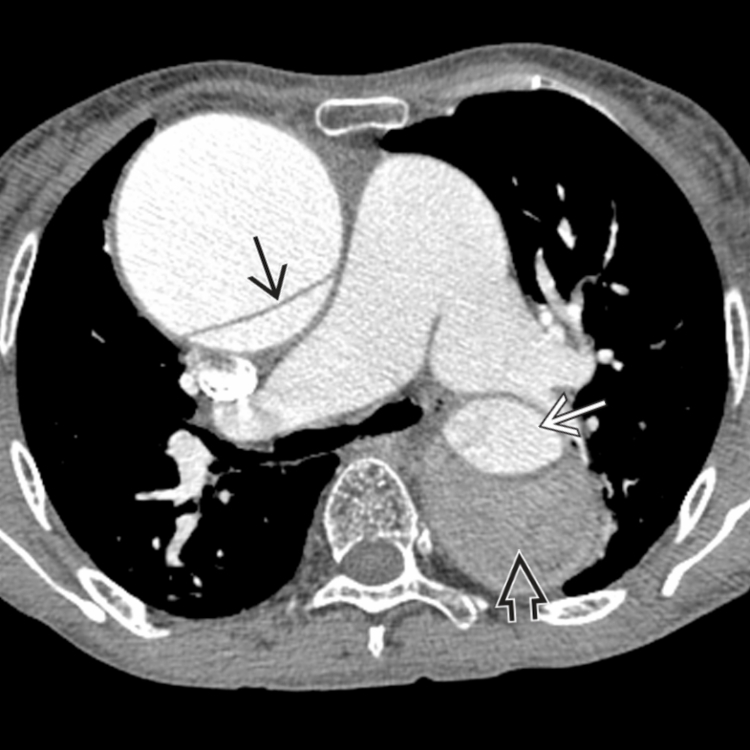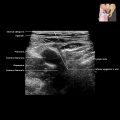KEY FACTS
Terminology
- •
Carotid artery dissection (CAD): Tear in carotid artery wall allows blood to enter and delaminate wall layers
Imaging
- •
Extracranial internal CAD (ICAD) > > intracranial ICAD or CCAD
- •
20% of ICADs bilateral or involve vertebral arteries
- •
Pathognomonic findings of dissection: Intimal flap or double lumen
- •
Turbulent flow caused by fluttering intimal flap
- •
Smooth tapering stenosis typical sonographic appearance of ICAD; often occurs in young patients with no visible atherosclerotic plaque
- •
High ICAD beyond reach of ultrasound may only manifest as ↑ flow resistance in Doppler waveform and ↓ flow velocity due to distal obstruction
- •
Flap may be obscured by color blooming artifact on color Doppler and better seen on grayscale
- •
False lumen commonly demonstrates low peak flow velocity and reversed diastolic flow direction
- •
“Slosh” phenomenon of systolic forward-and-backward flow proximal to dissection highly typical
Top Differential Diagnoses
- •
Fibromuscular dysplasia
- •
Traumatic internal carotid artery pseudoaneurysm
Clinical Issues
- •
Ipsilateral pain in face, jaw, head, or neck
- •
Oculosympathetic palsy (miosis and ptosis, partial Horner syndrome), bruit (40%), pulsatile tinnitus
- •
Ischemic symptoms (cerebral or retinal TIA or stroke)
- •
Lower cranial nerve palsies (especially CNX)
Scanning Tips
- •
Beware of mirror image artifact in which IJ vein anterior to carotid is mirrored over carotid artery and can mimic dissection; rescan in different position
- •
B-flow technique may confirm flap more clearly due to lack of color blooming artifact
- •
In suspected dissection, reimage with higher frequency linear transducer (10-15 MHz) to help delineate flap
 .
.
 . Doppler waveforms of these 2 lumina both show high-resistance flow with rapid systolic upstroke and minimal forward flow during diastole.
. Doppler waveforms of these 2 lumina both show high-resistance flow with rapid systolic upstroke and minimal forward flow during diastole.
 and thrombosed false lumen
and thrombosed false lumen  . The larger thrombosed false lumen causes narrowing of the true lumen
. The larger thrombosed false lumen causes narrowing of the true lumen  .
.










